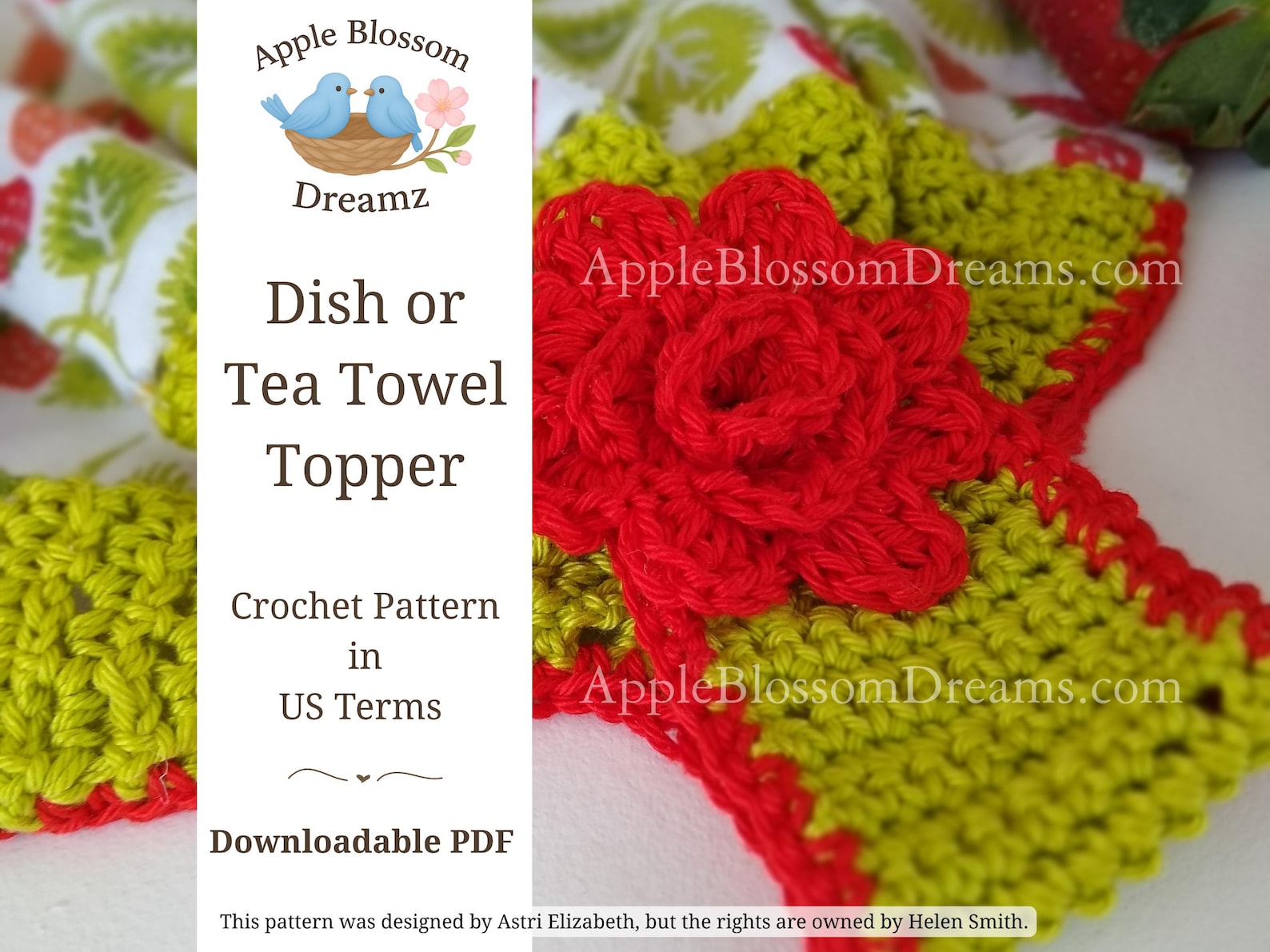Due to popular demand...haha...
This is the Mitered Dishcloth Pattern worked in both loops
and can be found on Etsy by clicking here.
I've created a free photo tutorial for the shell edge on the mitered dishcloth pattern.
It looks like this:
And this is how it's done:
First you will need to start off with a mitered dishcloth made from the
instant downloadable and chock full of photos pattern found here.

These differ a bit from the pattern as the ones pictured are worked in both loops of the sc,
just like a regular sc, for a flatter surface for the cherries to rest upon.
Pull the new color through the last sc of your row:
Then continue as usual:
Until you get the desired number of rows:
Then weave in all your ends.
You could stop here, and you would still have a
mighty fine dishcloth, but that is not what this post is about! :-)
So, here it goes with the shell edge:
ch 1
jump over to the area as indicated in the below photos and sc:
ch one:
sc here:
keep doing this all the way around,
to the base of the other side of the loop.
It's kind of difficult to see this in the following photo,
but in the corners, don't skip stitches:
then join with a sl st to the beginning ch.
Now, sc in the next st
Then place 4 dc in the ch space from the previous row:
sc in the next ch space:
Keep doing this alternating 4 dc and 1 sc in each ch space from the previous row.
(This is fun, huh?)
The corner will need to be played with a bit,
try not to skip any spaces so that your corner will be flat.
Keep going until you get to the base of the right hand side of the loop,
sl st to join.
And that's it!
Oh, you may want to weave in the ends.
Weaving is fun because you can correct and tighten the beginnings and ends a bit,
with some clever weaving. ;-)
First you will need to start off with a mitered dishcloth made from the
instant downloadable and chock full of photos pattern found here.

These differ a bit from the pattern as the ones pictured are worked in both loops of the sc,
just like a regular sc, for a flatter surface for the cherries to rest upon.
If you use this yarn it makes a pretty thick dishcloth.
I actualy prefer a lighter yarn (dk-sport) for a dishcloth and then
I double up two dishcloths with a sc join together if I want to use as a hot pad.
This yarn makes them almost thick enough for a potholder...
but be careful not to get burned unless it's super thick.
Here's an option for a bi-color dishcloth:
If you would like to change color midstream then do this:
Then continue as usual:
Until you get the desired number of rows:
Then weave in all your ends.
mighty fine dishcloth, but that is not what this post is about! :-)
Join the yarn at the base of the "loop":
ch 1
jump over to the area as indicated in the below photos and sc:
ch one:
sc here:
keep doing this all the way around,
to the base of the other side of the loop.
Do you see where I went in for each sc?
If not, does this help?:
When you come to the two bottom sides, just skip a st in between each sc
(don't forget to ch in between the sc's.)
It's easier on these two sides. :-)It's kind of difficult to see this in the following photo,
but in the corners, don't skip stitches:
When you get to the loop,
sc all the way around.
then join with a sl st to the beginning ch.
Now, sc in the next st
Then place 4 dc in the ch space from the previous row:
sc in the next ch space:
Keep doing this alternating 4 dc and 1 sc in each ch space from the previous row.
(This is fun, huh?)
The corner will need to be played with a bit,
try not to skip any spaces so that your corner will be flat.
Here are a few more corner shots:
(They are all slightly different,
and I like that!)
Keep going until you get to the base of the right hand side of the loop,
sl st to join.
And that's it!
Oh, you may want to weave in the ends.
Weaving is fun because you can correct and tighten the beginnings and ends a bit,
with some clever weaving. ;-)



















































